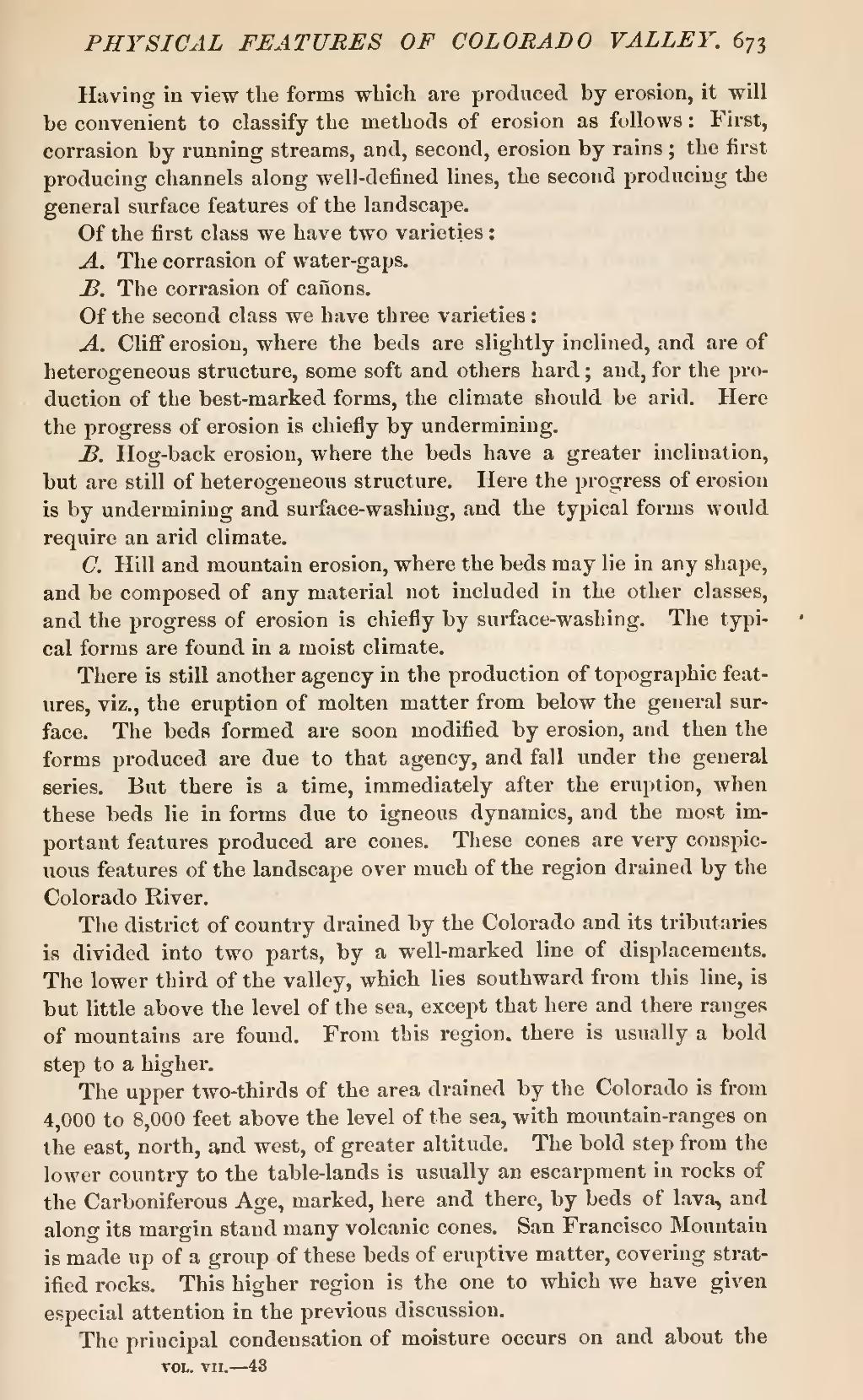Having in view the forms which are produced by erosion, it will be convenient to classify the methods of erosion as follows: First, corrasion by running streams, and, second, erosion by rains; the first producing channels along well-defined lines, the second producing tie general surface features of the landscape.
Of the first class we have two varieties:
A. The corrasion of water-gaps.
B. The corrasion of cañons.
Of the second class we have three varieties:
A. Cliff erosion, where the beds are slightly inclined, and are of heterogeneous structure, some soft and others hard; and, for the production of the best-marked forms, the climate should be arid. Here the progress of erosion is chiefly by undermining.
B. Hog-back erosion, where the beds have a greater inclination, but are still of heterogeneous structure. Here the progress of erosion is by undermining and surface-washing, and the typical forms would require an arid climate.
C. Hill and mountain erosion, where the beds may lie in any shape, and be composed of any material not included in the other classes, and the progress of erosion is chiefly by surface-washing. The typical forms are found in a moist climate.
There is still another agency in the production of topographic features, viz., the eruption of molten matter from below the general surface. The beds formed are soon modified by erosion, and then the forms produced are due to that agency, and fall under the general series. But there is a time, immediately after the eruption, when these beds lie in forms due to igneous dynamics, and the most important features produced are cones. These cones are very conspicuous features of the landscape over much of the region drained by the Colorado River.
The district of country drained by the Colorado and its tributaries is divided into two parts, by a well-marked line of displacements. The lower third of the valley, which lies southward from this line, is but little above the level of the sea, except that here and there ranges of mountains are found. From this region, there is usually a bold step to a higher.
The upper two-thirds of the area drained by the Colorado is from 4,000 to 8,000 feet above the level of the sea, with mountain-ranges on the east, north, and west, of greater altitude. The bold step from the lower country to the table-lands is usually an escarpment in rocks of the Carboniferous Age, marked, here and there, by beds of lava, and along its margin stand many volcanic cones. San Francisco Mountain is made up of a group of these beds of eruptive matter, covering stratified rocks. This higher region is the one to which we have given especial attention in the previous discussion.
The principal condensation of moisture occurs on and about the

